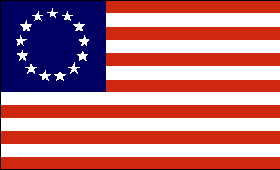Colonial Wars |
American Wars |
Link To This Page — Contact Us —
The Battle of Little Miami River
August 8, 1780 at Little Miami River, Ohio
 |
|||||||||||||||||||||
|
"On the 2d of August, 1780, Gen. Clark took up the line of march, from where Cincinnati now stands, for the Indian towns. The line of march was as follows: The first division, commanded by Clark, took the front position; the center was occupied by artillery, military stores and baggage; the second. commanded by Col. Logan, was placed in the rear. The men were ordered to march in four lines, at about forty yards distant from each other, and a line of flankers on each side, about the same distance from the right and left lines. There was also a front and a rear guard, who only kept in sight of the main army. In order to prevent confusion, in case of an attack of the enemy, on the march of the army, a general order was issued, that, in the event of an attack in front, the front was to stand fast, and the two right lines to wheel to the right, and the two left-hand lines to the left, and form a complete line. while the artillery was to advance forward to the center of the line. In case of an attack on either of the flanks or side lines, these lines were to stand fast, and likewise the artillery, while the opposite lines wheeled and formed on the two extremes of those lines. In the event of an attack being made on the rear, similar order was to be observed as in an attack in front.
"In this manner the army moved on without encountering anything worthy of notice until they arrived at Chillicothe (situated on the Little Miami River, in Greene County), about 2 o'clock in the afternoon on the 6th day of August. They found the town not only abandoned, but most of the houses burnt down and burning, having been set on fire that morning. The army encamped on the ground that night, and, on the following day, cut down several hundred acres of corn; and, about 4 o'clock in the evening, took up their line of march for the Piqua towns, which were about twelve miles from Chillicothe [in Clark County]. The army came in sight of the Indian town on the west side of Mad River, about five miles west of the site of Springfield, at 2 o'clock in the afternoon of the 8th. The Indians were concealed in the high grass of a prairie adjoining the town. A desperate battle ensued. Twenty whites were killed, but the Indians were defeated and put to flight, and their town utterly destroyed.
"It was estimated that at the two Indian towns, Chillicothe and Piqua, more than five hundred acres of corn was destroyed, as well as every species of eatable vegetables. In consequence of this, the Indians were obliged, for the support of their women and children, to employ their whole time in hunting, which gave quiet to Kentucky for a considerable time.
"The day after the battle, the 9th, was occupied in cutting down the growing corn, and destroying the cabins and fort, etc., and collecting horses. On the 10th of August, the army began their march homeward, and encamped at Chillicothe that night, and on the 11th, cut a field of corn, which had been left for the benefit of the men and horses on their return. At the mouth of the Licking, the army dispersed, and each individual made his best way home.
"Thus ended a campaign in which most of the men had no other provisions for twenty-five days then six quarts of Indian corn each, except the green corn and vegetables found at the Indian towns, and one gill of salt; and yet not a single complaint was heard to escape the lips of a solitary individual. All appeared to be impressed with the belief that, if this army should be defeated, that few would be able to escape, and that the Indians then would fall on the defenseless women and children in Kentucky, and destroy the whole. From this view of the subject, every man was determined to conquer or die."
